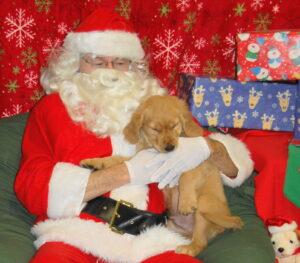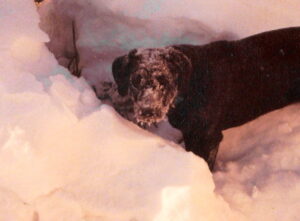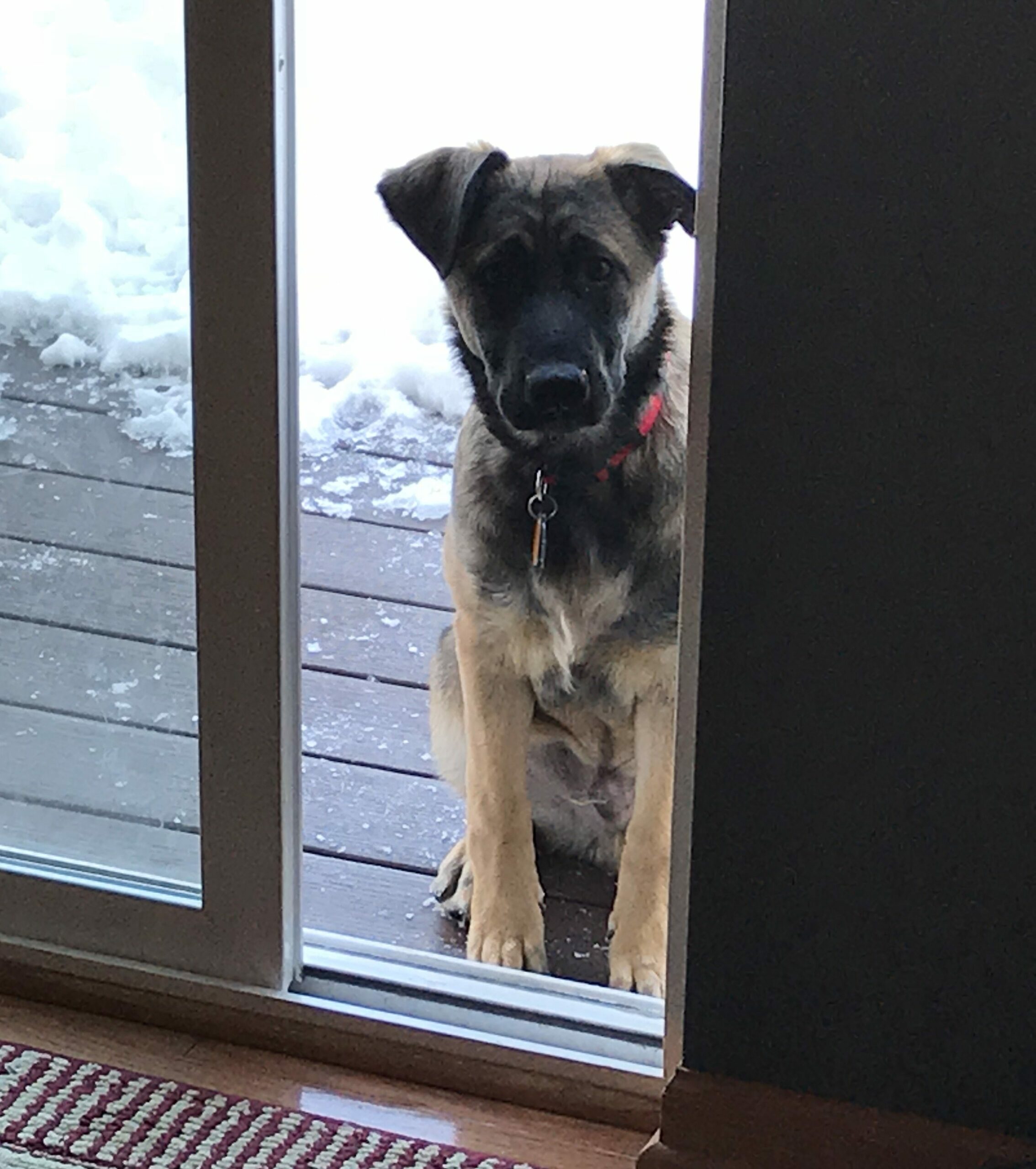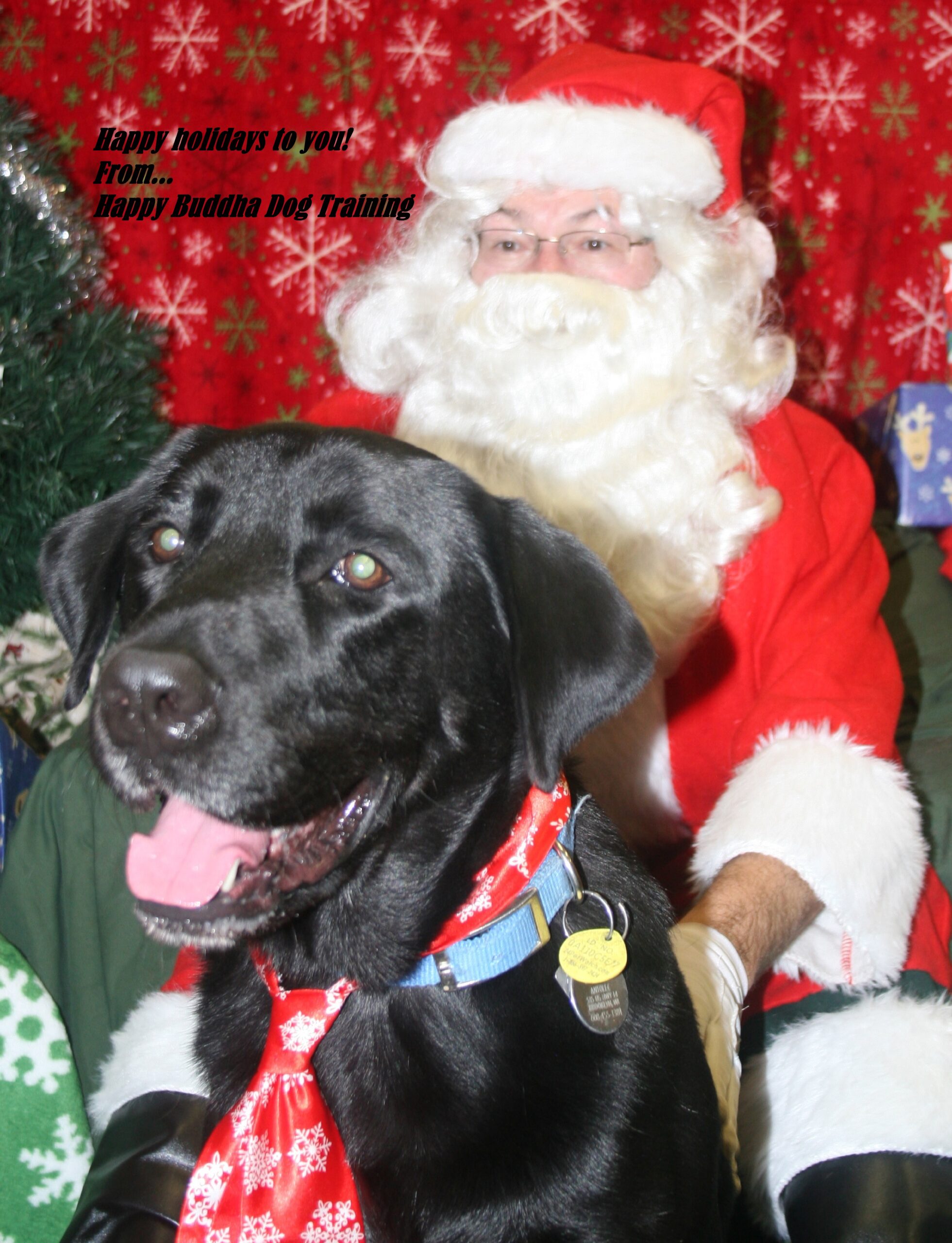Barks Blog
Opinion: Puppies Are Poor Christmas Gifts
It may be tempting for parents to get a puppy for their kids as a special Christmas gift. We have probably all seen TV programs and holiday movies where that scene played out joyfully on screen. And there was always a happy ending.

But Christmas puppies do not always have happy endings. Modern families seem busier than ever. Often, both parents work full time, the kids are away at school during the day and are being transported to and from athletic and social activities on weeknights and weekends. That leaves little time for the daily requirements of a puppy.
The holiday season creates more challenges with the Christmas buying frenzy, increased social and family gatherings, followed by New Years Eve and the post-Christmas debt paying blues. These pressures compound the difficulty of fulfilling the daily needs of a puppy.
Take potty training for example. Among my puppy owning clients I hear nearly universal frustration about soiling inside the home, ruined carpets and rugs, and having to let the puppy out frequently. Optimal potty training means taking the puppy out every hour or so during waking hours, regardless of the weather, treat in hand, and rewarding the puppy upon the completion of elimination.
Then it is best to linger outside for a while to make sure the puppy has completely finished the job. When it is cold, wet and windy puppies want to hurry up and return to the house. So do the owners, and that is often the kernel of poor potty training habits.
Cold and sloppy Wisconsin winter weather is a powerful disincentive to fast and effective potty training. As I type this blog our weather switched from 45 degrees and wet conditions yesterday to a high of 19 degrees today, with a stiff cold wind for an additional slap in the face. Puppies and people alike may prefer to stay inside.
Pulling on the leash is another very common complaint. Wearing a collar and being tethered to a human being is not a natural behavior for dogs, and a puppy must learn this as a skill. A good way to teach a puppy is to take them for several short walks each day. That is easier said than done when a family has a busy schedule to begin with, and then add holiday activities to it.
Using food rewards during the training process is very profitable, but is more difficult when wearing thick gloves or fuzzy mittens. Removing them during leash walks can result in numb fingers and shorter walks in order to just be done with it.

Or maybe just skip the walk because of an ice storm, or a lack of time due to snow removal obligations.
Puppies do not enjoy frozen paws either, or the chemical salts spread on sidewalks and streets alike which sting their pads and may cause other harm. Once back inside the home the puppy will lick those pads unless owners put booties on their feet prior to the walk, or wash puppy paws upon returning home. That too may become another bother resulting in fewer walks.
Lack of socialization is another concern, and perhaps the most serious. The puppy brain develops on a daily basis and the primary socialization period occurs from roughly six to 12 weeks. Most puppies are brought into the home at eight weeks of age. That leave only four weeks, during the coldest part of the winter, to thoroughly socialize a Christmas puppy.
Dr. Ian Dunbar, a noted veterinarian and behaviorist, wrote Before and After Getting a Puppy and recommended introducing a puppy to a minimum of 100-200 novel people by 12 weeks of age. More is even better.
It also means introducing a puppy to a wide variety of walking surfaces, locations, social activities, tools, equipment, animals and so on. Introductions must be safe and fun for the puppy. Think about what the socialization process entails, and then consider how the vast majority of us hunker down for the winter. There is far less activity in the community, aside from snow removal.

A Christmas puppy who is not well socialized will likely become an anxious and fearful adolescent, by spring. Many such dogs I work with at six or seven months of age were Christmas season puppies. Socialization requires effort, but trying to reduce anxiety and fear through behavior modification is much more difficult.
I liken the primary puppy socialization process to easily drifting downriver toward your goal. After about 12 weeks of (puppy) age it is as if the current switched directions. If you have not reached your socialization goal you can still work on it, but it takes far more effort to reach the destination.
My concern is that if a family was “too busy” to socialize their puppy when the task was relatively easy, they will not commit to the requirements when the task is much more challenging.
One final thought. The initial joy of receiving a puppy as a Christmas gift may soon fade, in the same way a child may quickly lose interest in those expensive spiffy new toys you bought. By spring the adolescent young dog who has been developing training and behavioral issues for months may be surrendered to a shelter.
Shelters are full of such dogs, and euthanasia due to behavioral issues is too common among healthy dogs.
I suggest waiting until early spring, planning ahead, and seeking out a veterinarian and a force-free trainer in advance. Prepare to bring a puppy into your life as you would prepare to have a baby. Then everyone will be set up to succeed so you may enjoy many happy holidays seasons together for years to come.

Happy Holidays!
References
Dunbar, I. (2014). Before and After Getting Your Puppy. Novato, CA: New World Library
Gaille, B. (2017). 20 Dog Euthanasia Statistics. Available at: https://brandongaille.com/23-interesting-dog-euthanasia-statistics
Miller, P. (2019). Pre-Puppy Preparation: Stop! Don’t bring that adorable puppy home until you are prepared. Whole Dog Journal. Available at: https://www.whole-dog-journal.com/issues/8_9/features/Pre-Puppy-Preparation_15742-1.html
Murphy, S. (2018). Are “Pet Friendly” Ice Melts Really Safe? Animal Wellness. Available at: https://animalwellnessmagazine.com/pet-friendly-ice-melts-safe

